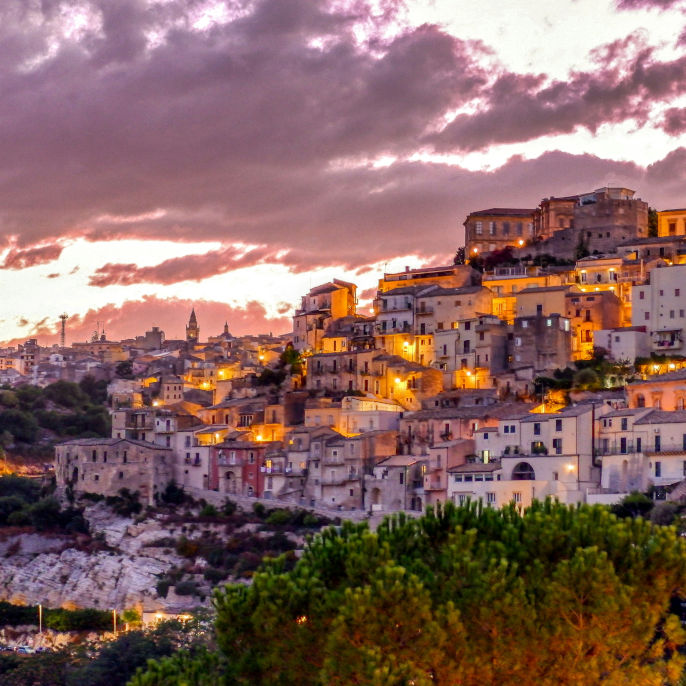Discover the Magic and Charm of Eastern Sicily
From modern Ragusa to Ragusa Ibla, a UNESCO World Heritage Site, passing through Modica with its monumental churches and the irresistible delight of its chocolate, then on to Ispica with its breathtaking canyon, and finally the enchanting Donnafugata Castle.
Sicily is all this — and so much more.
A Marvel of Nature
Unforgettable Experiences
Etna/Taormina
Full-Day Tour
Bus arrival on Mount Etna at an altitude of approximately 1,900 meters.
Optional ascent to 2,750 meters by cable car and 4×4 (not included, to be paid on site).
Break with a snack at the mountain hut, enjoying a panoramic view.
In the afternoon, transfer to Taormina, with free time to stroll through the charming streets of this beautiful town and (optional) visit the Greek-Roman theatre.
We recommend wearing comfortable shoes.
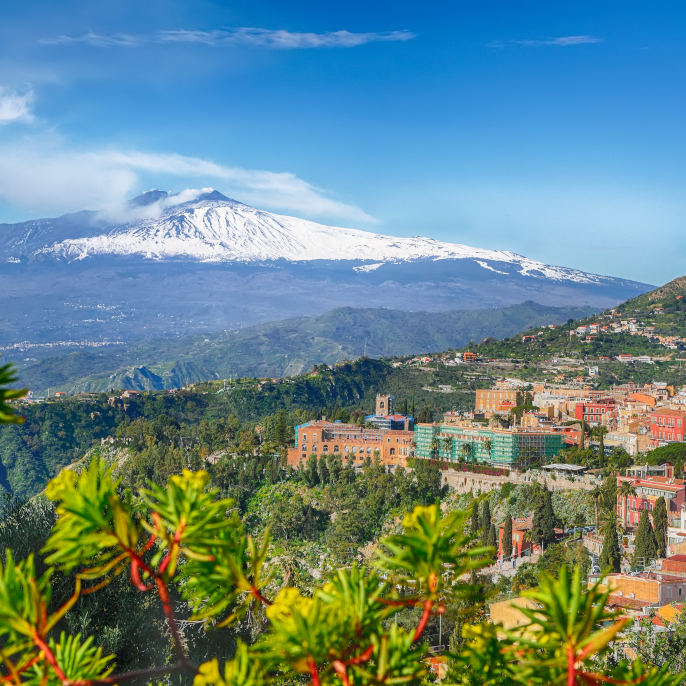
Modica/Ragusa Ibla
Half-Day Tour
A visit dedicated to discovering the treasures of Sicilian Baroque.
The tour begins in Modica, strategically located and rebuilt after the 1693 earthquake following the principles of Baroque architecture.
The journey continues to Ragusa Ibla, a town with ancient origins that has preserved its medieval charm. Its palaces and churches make it a true jewel of Sicilian Baroque.
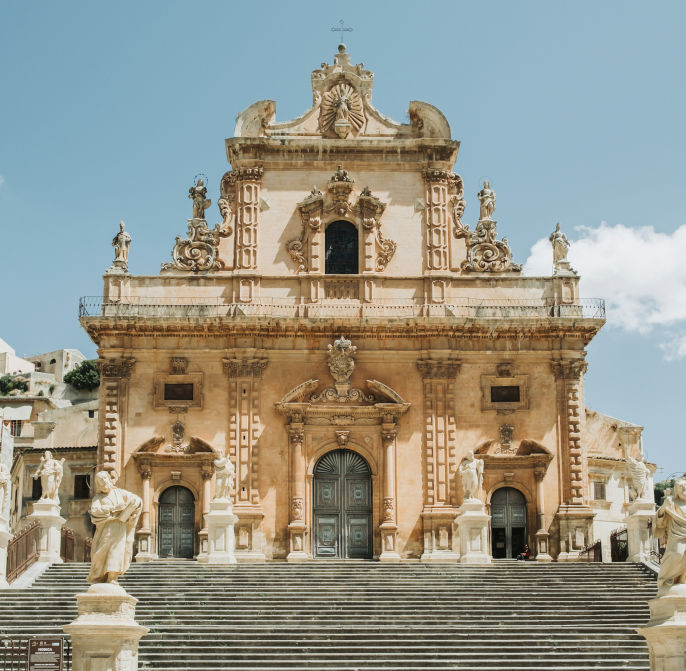
Noto
Half-Day Tour
Noto is a small jewel of Sicilian Baroque and a UNESCO World Heritage Site since 2002.
This splendid town is perched on a plateau overlooking the Asinaro Valley.
Enjoy a guided tour of the town to admire its magnificent Baroque architecture, followed by free time for shopping.
Starting from Porta Reale, the tour will follow the main street, Corso Vittorio Emanuele, lined with Baroque palaces and churches — including the stunning Cathedral and Palazzo Nicolaci, whose balconies never fail to amaze visitors.
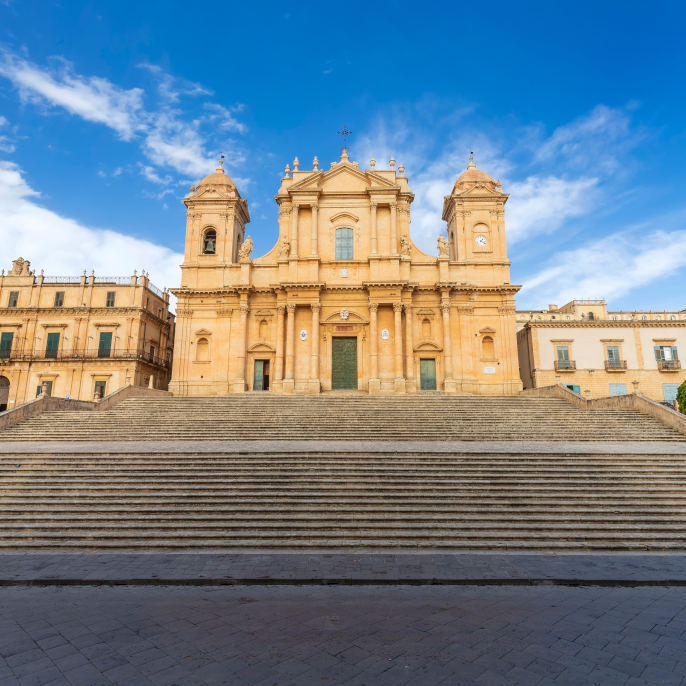
Montalbano Tour
Half-Day Tour
The tour begins with a self-guided visit to the Donnafugata Castle, a sumptuous noble residence from the late 19th century.
The journey continues to Punta Secca, the charming fishing village and filming location of the home of Italy’s most famous fictional detective — Inspector Montalbano.
Next stop is Donnalucata, a beautiful seaside town where you can stroll along the promenade, shop in local boutiques, and enjoy a delicious gelato from the province’s most renowned traditional ice cream shop.
The tour ends with a panoramic stop at the ancient brick kiln, a rare piece of industrial archaeology, whose mysterious charm has inspired countless stories in shades of yellow.
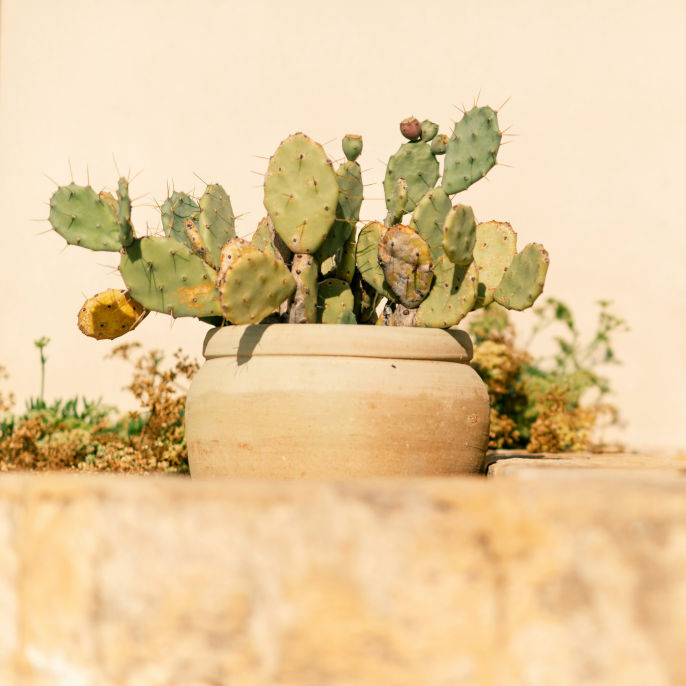
Siracusa
Full-Day Tour
Departure to Syracuse.
The excursion includes a visit to the “Neapolis” Archaeological Park, featuring: the Greek Theatre, the Ear of Dionysius, the Altar of Hiero II, and the Roman Amphitheatre.
The tour continues to Ortigia, the historical heart of the city, rich in priceless artistic treasures: the Temple of Apollo, Piazza Duomo, and the legendary Fountain of Arethusa.
Enjoy a Street Food Experience and free time for shopping in Ortigia, a UNESCO World Heritage Site since 2005.
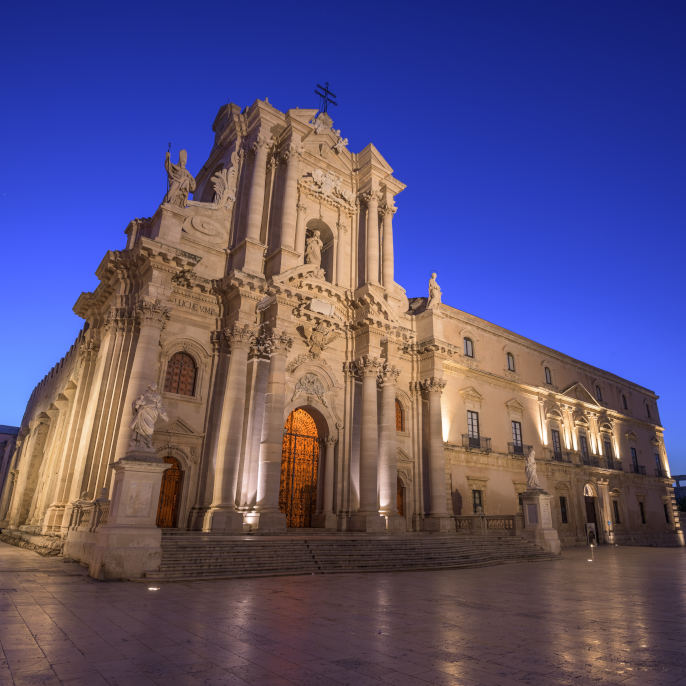
Marzamemi
Full-Day Tour
Boat excursion from Marzamemi, exploring some of the most beautiful and unspoiled spots in the area.
You’ll have the chance to dive into the crystal-clear, Caribbean-like waters of Eastern Sicily, between Capo Passero Island, Marzamemi, and Vendicari.
During the excursion, you’ll enjoy authentic Sicilian flavors:
Croissants, a local aperitif with a variety of traditional tastings, seasonal fruit, and dessert.
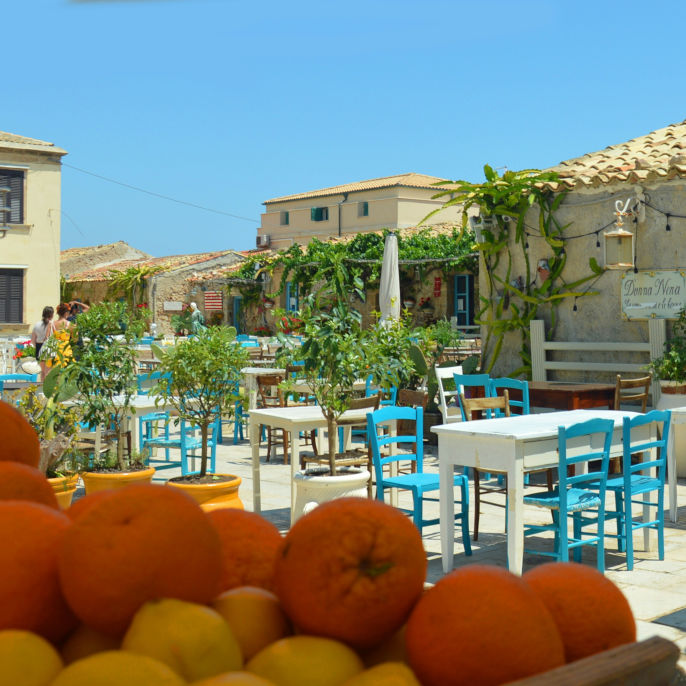
Malta
Full-Day Tour
Arrival in Malta by hydrofoil at around 10:30 AM.
Guided tour of the old capital, Mdina, known for its medieval charm and narrow alleys.
In the afternoon, visit St. Julian’s and Sliema, two of Malta’s most modern and lively cities.
Arrival in Valletta for a tour of the Upper Barrakka Gardens, offering a spectacular panoramic view of the Grand Harbour and the Fort St. Angelo, along with the surrounding towns.
At 7:00 PM, departure from Malta to Pozzallo. Return to the hotel in time for dinner.
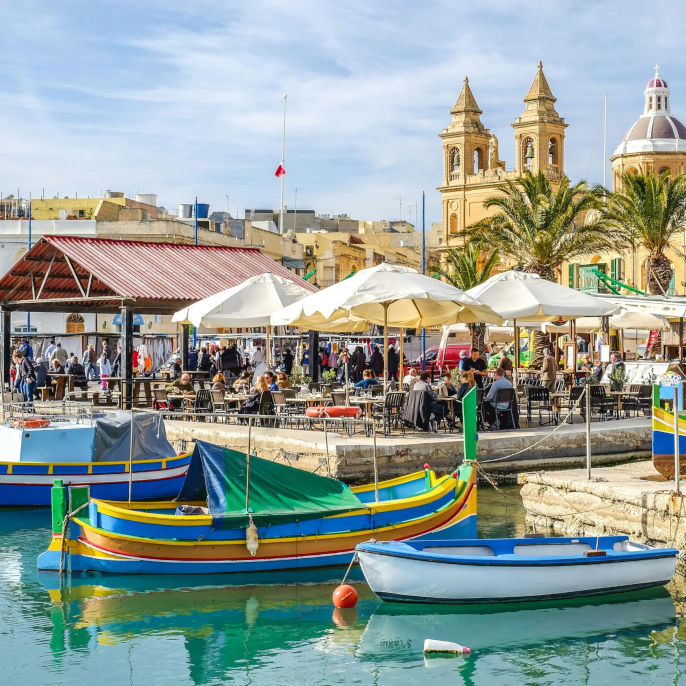
Vicolando By Night
A nighttime stroll through the illuminated, lesser-known alleys of Modica will let you discover the past and present of this unique city.
Starting from the Jewish quarter, you’ll walk to the historic center, where a tourist train will take you up to the upper part of Modica.
Free time for shopping before returning to the hotel.
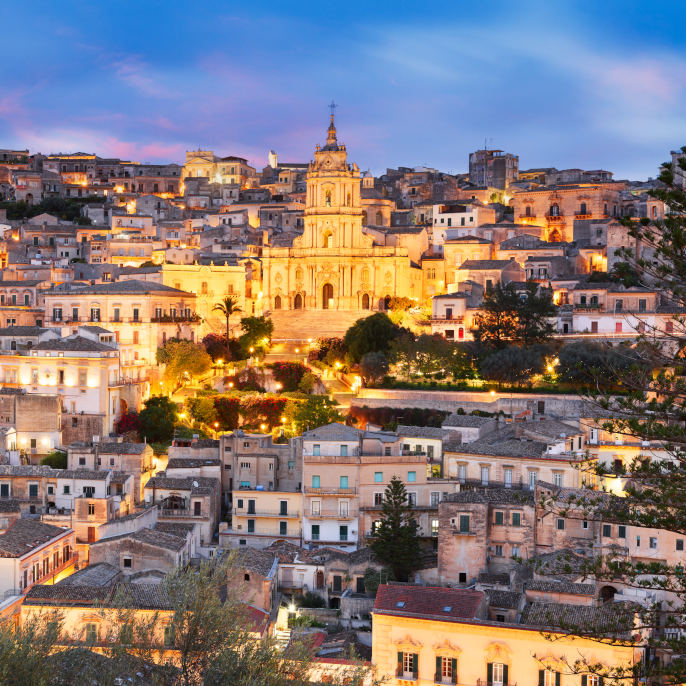
Scicli by night
The Baroque Train will take you on a discovery tour of the most important UNESCO monuments, breathtaking views, and the iconic locations from the Montalbano TV series — from the police station to the highest point of the town.
Comfortably seated, you’ll travel through the entire historic center, admiring the city’s beauty along the way.
Free time is included to taste typical local products, from the Testa di Turco dessert to traditional almond biscuits.
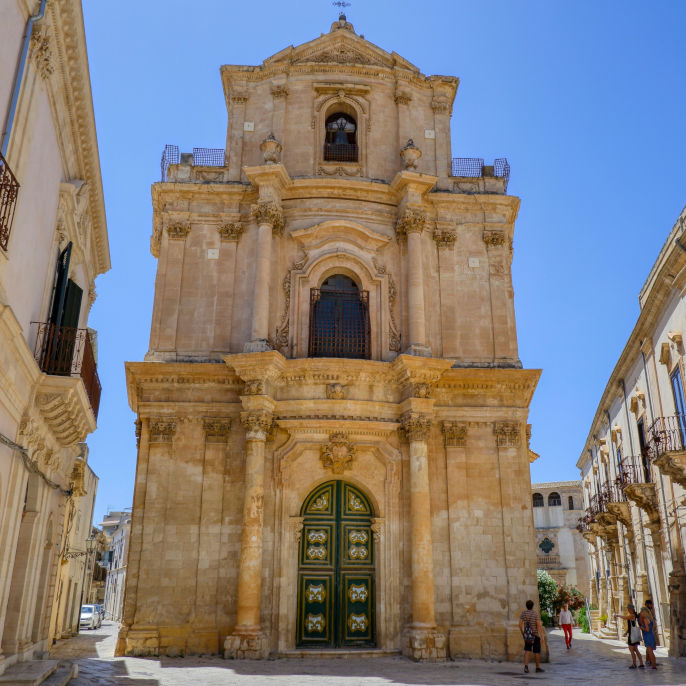
Ragusa Ibla by night
“You need to be intelligent to come to Ibla, to have a certain quality of soul, a taste for silent and glowing tuff stone, for blind alleys, pointless twists, and shutters sealed over a dark gaze that spies.”
This is how Gesualdo Bufalino described it — and it’s exactly the feeling one gets while strolling through this enchanting town.
Don’t miss the chance to enjoy a pleasant walk in the Iblean Gardens, followed by some free time for shopping or tasting a delicious gelato.
